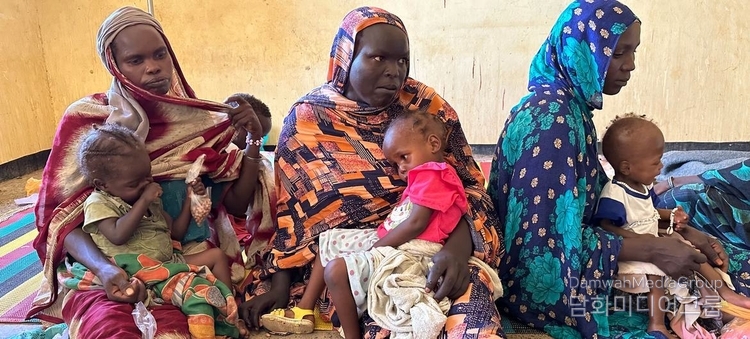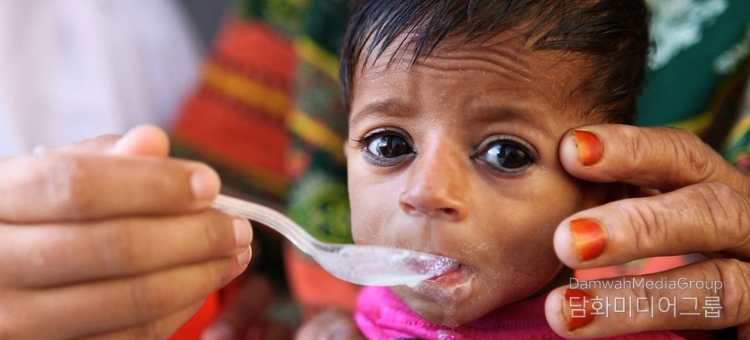By UN Journal Kayla Lee
Nearly two million children suffering from severe wasting are at risk of death due to funding shortages for life-saving Ready-to-use-Therapeutic-Food (RUTF) to treat the condition, which is the most dangerous form of malnutrition, the UN News reported.
The warning comes from UN children’s agency UNICEF which said levels of severe wasting in children under five remain gravely high in several countries due to conflict, economic shocks and climate crises.

Severe wasting - also known as severe acute malnutrition - is caused by a lack of nutritious and safe foods and repeated bouts of disease, such as diarrhoea, measles and malaria.
According to the UN News, children become dangerously thin, and their weak immune systems make them vulnerable to growth failure, poor development, and death.
RUTF is an energy dense, micronutrient paste made from powdered milk, peanuts, butter, vegetable oil, sugar, and a mix of vitamins and minerals.
It has helped bring millions of children back from the brink of death from severe malnutrition. “In the past two years an unprecedented global response has allowed the scale-up of nutrition programmes to contain child wasting and its associated mortality in countries severely affected by conflict, climate and economic shocks, and the resulting maternal and child nutrition crisis,” said Victor Aguayo, UNICEF Director of Child Nutrition and Development Victor Aguayo.

“But urgent action is needed now to save the lives of nearly two million children who are fighting this silent killer.” UNICEF said shortages of RUTF are already leaving children at risk of not receiving treatment in the 12-hardest hit countries.
Mali, Nigeria, Niger and Chad are either already experiencing or imminently facing stockouts, while Cameroon, Pakistan, Sudan, Madagascar, South Sudan, Kenya, the Democratic Republic of Congo and Uganda could run out of stock by mid-2025.
The situation in Africa’s Sahel region is exacerbated by prolonged droughts, floods, and erratic rainfall. This is leading to food shortages and high food prices and, subsequently, higher levels of severe wasting.
For example, over 300,000 under-fives in Mali are expected to suffer from severe wasting this year, yet nutrition programmes started running out of RUTF supplies at the end of July.
Meanwhile, the Government in Chad declared a food and nutrition emergency in February, and over 500,000 children under five are projected to suffer from severe wasting this year. Provinces with large refugee populations are particularly affected.
Roughly 315,000 children in the country were treated between January and August. Although needs remain urgent, stocks of RUTF could run out by the end of this month.
UNICEF is seeking $165 million to fund therapeutic feeding, treatment and care for the two million children who are at-risk of death, in an update to its No Time to Waste plan. The initiative was launched in 2022 to respond to the global food and nutrition crisis. Since then, UNICEF has raised over $900 million to scale up programmes, services and supplies for the early prevention, detection and treatment of child wasting.
As a result, 21.5 million children and women received essential services, while 46 million children were reached with early detection services and 5.6 million accessed life-saving treatment. To address severe child malnutrition in the long term, UNICEF launched the Child Nutrition Fund (CNF) last year, with the support of the United Kingdom Foreign Commonwealth and Development Office, the Bill and Melinda Gates Foundation, and the Children’s Investment Fund Foundation.
The CNF goals include supporting local and regional production of fortified foods, food supplements and RUTF for young children in areas experiencing high levels of child malnutrition in efforts to circumvent global supply chain disruptions, reduce environmental impacts of shipment, and boost job opportunities and economic growth within communities.
Once fully implemented, the CNF will help insulate countries from the funding shortages and fluctuations in demand currently driving part of the growing RUTF shortages.






